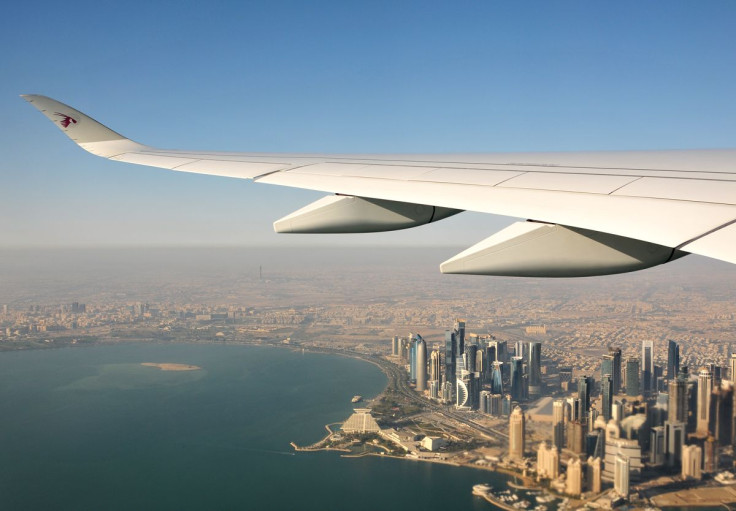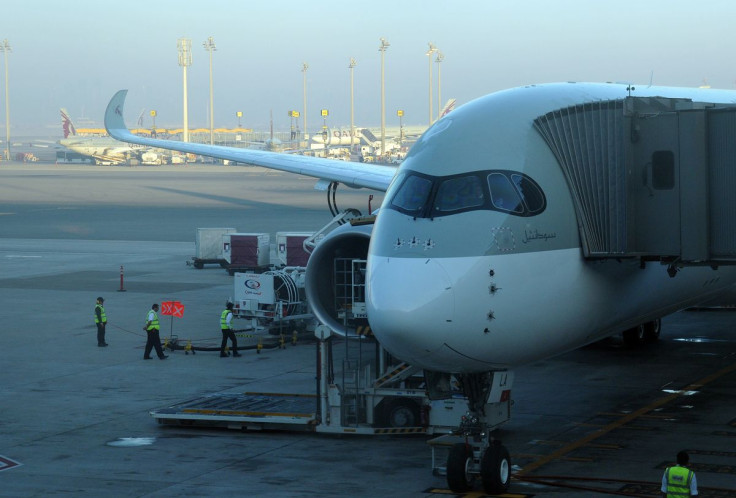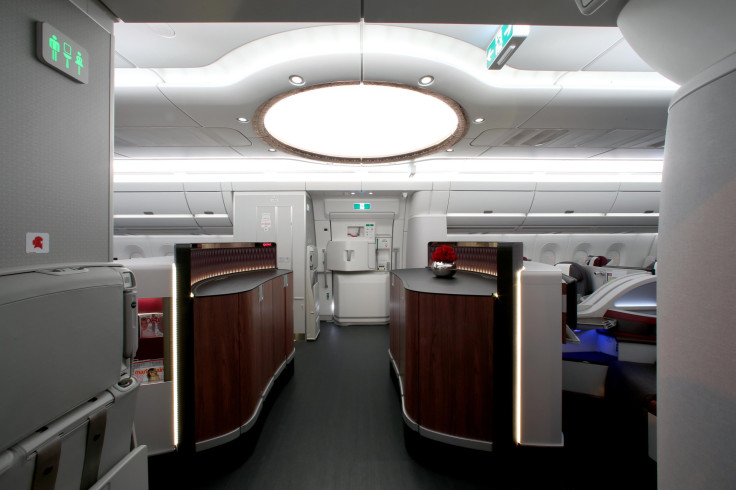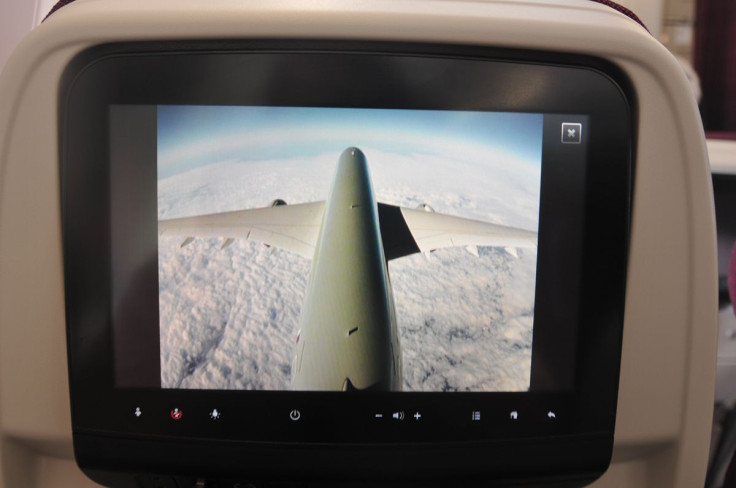Flying On The Qatar Airways A350 On The First Commercial Service, As Newest Airbus Debuts

FRANKFURT, Germany -- The Airbus A350, the European consortium’s rival to the Boeing 787 and the last large jetliner to be introduced for a period that may stretch for decades, made its commercial debut on Thursday with its first revenue flight. Launch customer Qatar Airways flew its first A350-900 from Qatari capital Doha to Frankfurt, Germany, after taking delivery of the jet last month.
The first of 778 A350s ordered by 41 customers worldwide marks Airbus’ entry, three and a half years after Boeing, into the field of long-range twin-engine jetliners made largely from composite materials. The lighter airplanes are able to deliver fuel savings of 20 to 30 percent per each passenger flown one mile compared with earlier jets of the same size. The better fuel efficiency will help these types of jet planes become the backbone of intercontinental air travel as airlines swap out older models for A350s and 787s.
“Thank you for making history," captain Konstantinos Iliakis said on the intercom as flight QR67 approached Frankfurt.
The A350 is the third major commercial aircraft to debut in the 2000s and will be the last for many years, as neither member of the large-jet duopoly has new designs in the pipeline. The Boeing 787 entered service in 2011, and the double-decker A380, the biggest passenger jet airplane ever, in 2007.
The new Airbus is also the key to the continued growth of Qatar Airways, one of three big Persian Gulf carriers (with Emirates and Etihad Airways being the other two) that have reshaped the airline industry by expanding enormously. Qatar, founded in 1994, has a total of 80 A350s on order and plans to use them on routes to Asia and Europe, where it has been taking away long-range traffic from established airlines.
"The delivery of this new aircraft category into the Qatar Airways' fleet ... is a moment of absolute national pride for Qatar Airways and the state of Qatar," CEO Akbar al-Baker said last week.
The Thursday flight was almost full, with only 26 of 283 seats unoccupied, all in coach class. The 36 business-class seats were occupied almost exclusively, said a flight attendant, by aviation enthusiasts who had gathered in Doha for the express purpose of being on a first revenue flight.

At the Doha airport, Qatar Airways staff handed each passenger a bag with a scale model of the airplane and a certificate inside, and waiters roamed the gate area with platters of macaroons and non-alcoholic cocktails. On board, the A350 appeared immediately different from earlier wide-body jets. With its large oval windows and oversize bins for carry-on bags, it gave a feeling of space, which was enhanced by the atrium that passengers walk through when boarding -- a roomy area at the back end of business class.
The actual seating on Qatar Airways does not offer more legroom than other airplanes, but in economy class, a fuselage wider than in similar sized jets -- Airbus calls it the “A350 XWB” for “extra-wide body” -- allows nine-abreast seating with a seat width of 18 inches. By comparison, the Boeing 787 with nine-abreast coach features a seat width of 17.3 inches. On the six-hour flight to Frankfurt, the difference, albeit small, could be felt.

The Rolls Royce Trent XWB engines, unique to the A350, are remarkably quiet. Conversation felt as easy as it is on the 787. The Airbus also shares with the Boeing jetliner a lightweight construction due to a heavy use of composite materials instead of traditional aluminum (50 percent of the plane on the 787, 53 percent on the Airbus). That means the cabin can be pressurized to a lower equivalent altitude and kept more humid, because composites resist pressurization and corrosion better. Airbus and Boeing say this translates to more relaxed passengers, since a lot of the fatigue on long flights is due to low air pressure and dehydration.
The A350-900 is the midsize member of the A350 family, with the smaller A350-800 seating around 275 in a typical configuration and the longer A350-1000 competing in the long-range, high-capacity arena with up to 370 seats.
The A350-1000 is scheduled to make its first flight in 2016. The A350-800 may never be built due to poor sales, with only 16 on the order books.
The Boeing 787 is so far winning the sales battle, with 1,071 on order and 228 already in operation. But, of course, it has a head start of more than three years in revenue service.
A major difference between the 787 and A350 is that the former relies heavily on electric power for some key systems and uses lithium-ion batteries, which have caught fire on several occasions and led to a worldwide grounding of all 787s for three and a half months in 2013. The Airbus uses a traditional approach and traditional batteries (which are heavier).
No technical glitches marred the debut flight of the A350, whose delivery one month ago had been initially rejected by al-Baker, possibly for flaws in the interior design. None were apparent Thursday, except for vibrations from a window blind.

Flight QR67 landed in Frankfurt greeted by airport employees, some of whom had positioned themselves on building roofs to get better photos of the sleek new plane. And for enthusiasts of first flights, that landing marks the last such thrill for a long time to come. Airbus and Boeing aren’t designing any new jets officially, with the exception of the A320 neo and 737 MAX models -- but those are reengineered, improved version of current airplanes, not new designs. And because developing a new airplane takes many years, it could take decades before the world sees a new jet as advanced as the one that debuted Thursday.
© Copyright IBTimes 2024. All rights reserved.





















